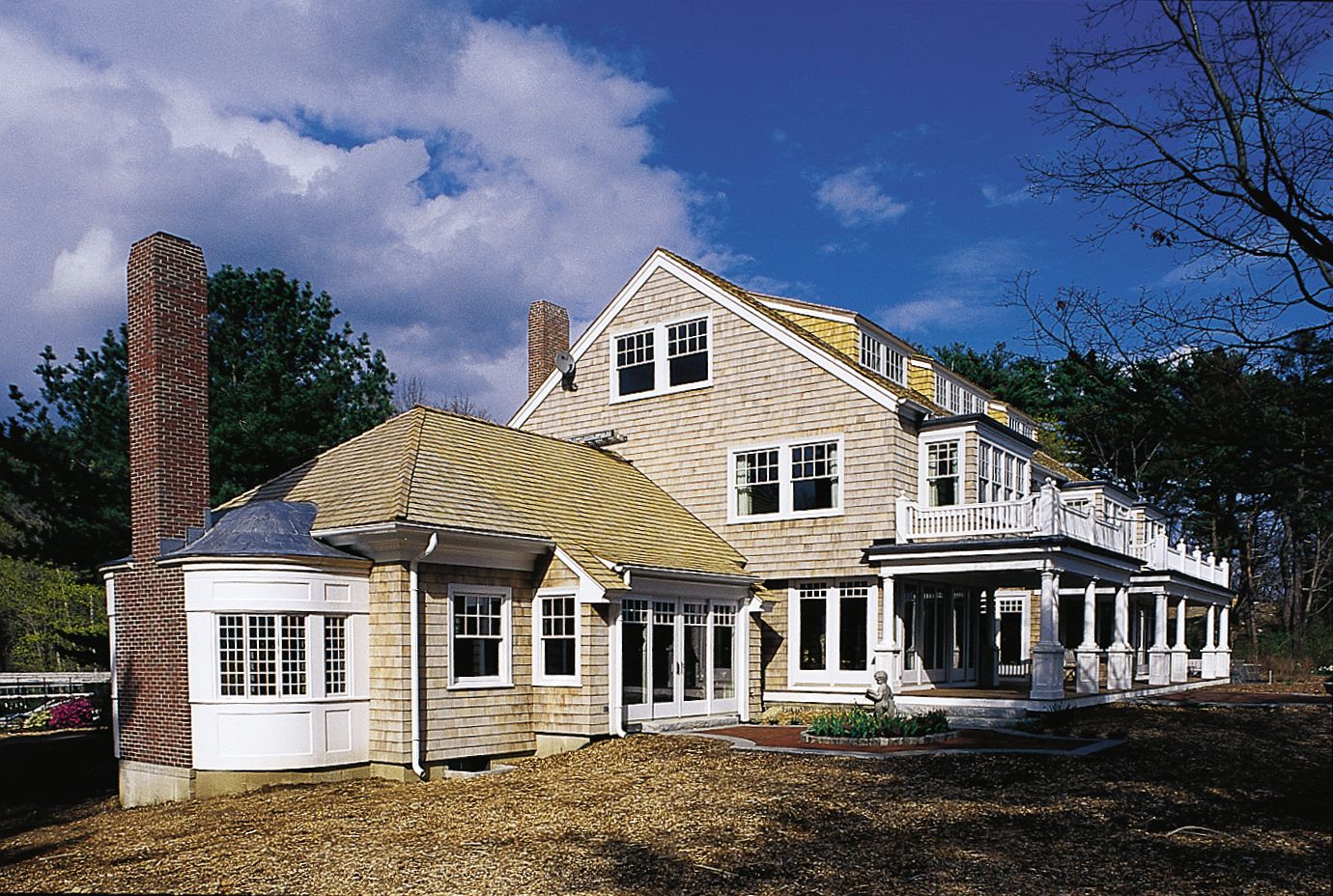Call it the Big Kahuna by the Sea. Our Manchester project was the longest and most ambitious renovation we’ve ever undertaken with homeowners: about 10 months and $1.5 million. But what a payoff. The McCues’ 1883 house, aptly described at the beginning of the project as looking like “a motel in Hyannis” (translation for non-New Englanders: “an unadorned shingled box”), is now once again the seaside beauty it was at the turn of the century, when the original Shingle-style building was done up in Colonial Revival finery.
As usual, general contractor Tom Silva provided solutions to two of the most vexing challenges the original building posed. From the day they moved in, the McCues had been troubled by the low ceiling heights on the first floor, especially in the living room that overlooked the sea. The feeling of being squashed was no doubt exacerbated by the original room’s narrowness (see floor plans), and architect Holt was quick to address part of the problem by proposing an expansion of the room into one large space to hold the kitchen and the living room. That meant removing a bearing wall. Enter Tommy. First he engineered a steel and wood flitch beam (Steeling the Show), inserted like a giant needle through a hole in the side of the house one dramatic afternoon. That opened the room up, but what about the low ceilings? As we all discussed the pros and cons of raising the ceiling or lowering the floor, Tommy quietly worked out a way to strengthen the ceiling joists with thin steel sheets and shave off the joist bottoms, gaining nearly 3 inches of room height. They proved to be a crucial few inches, giving the room a feeling of height while preserving the floors below and above.
One big reason we got involved with the McCues was their strong feeling about the historical importance of their home () and their desire to preserve what old bits were left. Paint maestro John Dee painstakingly brought back the details of the portico (Making a Grand Entrance), while Janet McCue and her friends tackled the half-round bumpout (We Do Windows).
But it was reconstructing what had been lost that took up the bulk of the time and money. Where inappropriate white cedar shingles were, on went reds (Selecting a Cedar Shingle). Where skylights had been, the old dormers were rebuilt (Former Dormers Revived). Where an entire wing had disappeared, a new one went back (), complete with its original inglenook (The Inglenook: A History of Hearth & Home). And because the original wood roof, trim, and divided-light windows had been lost partly because of their deterioration in the seaside environment, we made sure, when putting them back, to build them from long-lasting, low-maintenance materials: 50-year-warranteed wood shingles for the roof (A Newfangled Shingle); expanded urethane for the trim; aluminum cladding in the case of the windows (A Nifty New Window).
Inside, as always on This Old House projects, there were a few high-tech surprises. The new wing’s chimney went up fast, thanks to its modular construction (No Smoking Indoors). Its interior was rendered acoustically true thanks to acoustician John Storyk and a remarkable plastering system (How Sweet the Sound). Richard Trethewey installed a leakproof pair of oil tanks in the basement, showing us The Future of Oil Storage. And while the kitchen cabinetry was built the old-fashioned way (A Kitchen Collaboration), the rest of the house’s casework sprang from cabinetmaker Tom Perkins’ laptop computer, cut in the Midwest, and assembled in a nearby workshop (High-Tech Craftsman).
As the 200 guests at the wrap party found, the new house works. One visitor observed that the building was both wonderfully transparent, with its many windows giving ocean views, and irresistibly tactile, the beautiful woods, old-fashioned trim, and rich paint colors drawing the ocean-gazer back inside. Many were observed surreptitiously running their hands over the silky smooth paint job, the work of Jim Clark’s crew of surface-prep geniuses. The project is chock-full of such careful work. The nice thing about that, for those of us with slightly smaller projects — call them Little Kahunas — is that when it comes to craftsmanship, size doesn’t matter.

